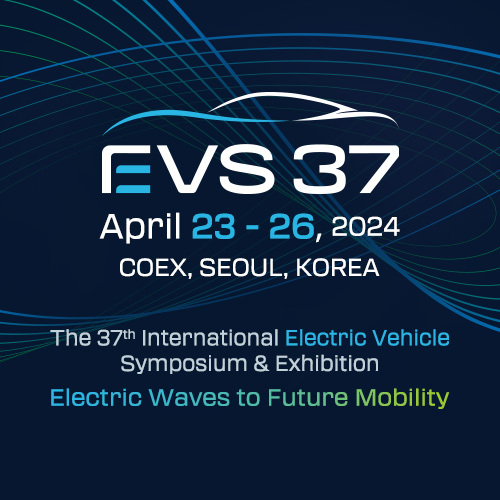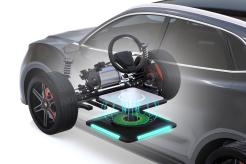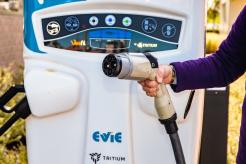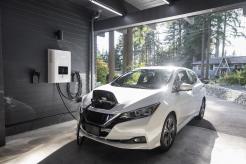Assumptions abound around the topic of electric vehicles. As the EV market grows, so do the myths about how, when, and where owners can charge their cars. From range anxiety to complicated installation processes, here are eight common myths about EV charging debunked.
Myth #1: EV charging is expensive.
The cost of charging an EV depends on several factors, including the price of electricity in your area and the size of the EV’s battery. However, it is generally less expensive to charge an EV than to fuel a gasoline-powered vehicle, especially considering the lower operating costs of EVs. According to the U.S. Department of Energy’s Alternative Fuels Data Center, charging an EV is roughly $0.03 per mile. Also worth keeping in mind: many initiatives offer financial incentives to EV owners, such as tax credits and discounts on public charging fees.
Myth #2: EV charging drains the electricity grid.

(Photo by Pok Rie)
In theory, EVs could cause real strain on the electrical grid, but proper charging strategies can reduce that strain and positively impact the grid. Peak shaving and load management can help alleviate grid stress by shifting charging needs away from peak hours. Smart charging and vehicle-to-grid technologies can balance supply and demand, contributing to a healthier electrical grid. Some industry leaders believe EVs can leverage bidirectional chargers to support the electrical grid!
Myth #3: Any EV can use any charger.
Just as your Samsung phone can’t use an iPhone charger, some EV chargers may not be compatible with specific EVs. Before using a charger, you’ll need to ensure your EV is compatible with the type of plug it uses — here’s one handy guide. Also, remember that not all public charging stations are open to everyone; many require payment or registration before you can use them.
Myth #4: Using a home charger requires extensive remodeling.

(Photo by Ed Harvey)
Installing a home charger can be as simple as plugging it into an existing outlet. Some garages may already have a dedicated 240-volt circuit, providing the fastest charging time for an EV. You will need to hire an electrician if your garage does not have a pre-wired system. While this will require additional time and cost, it can be cheaper than fueling a gasoline-powered vehicle over time.
Myth #5: EV charging takes too long and is inconvenient.
Charging your EV may feel inconvenient in the early days of transitioning from gas to electric. Not every EV charger can match the speed of filling up a tank in the time it takes to grab a Slurpee. However, a home EV charger and a change of habits make fueling your EV more convenient than it ever was to keep your gas-powered car full.
The speed at which an EV charges depends on the charger used and the capacity of the EV’s battery. Most EVs come with a charger you can plug into a standard 120-volt outlet, which can take several hours to charge the battery fully. However, there are also faster chargers, such as 240-volt Level 2 chargers and DC fast chargers, which can charge an EV in a shorter time. For example, a Level 2 charger can typically charge an EV in 4-8 hours, while a DC fast charger can charge an EV in as little as 30 minutes to an hour.
Myth #6: More publicly available chargers must be available for me to take my EV on long road trips.

(Photo by Avinash Patel)
This myth can be attributed to an all-too-common phenomenon known as “range anxiety“: the fear of running out of power while driving an EV. The truth is that thousands of public charging stations in cities and towns across the country allow longer trips in EVs. Many hotels and resorts offer guests complimentary or discounted charging services, and many public charging networks offer roaming agreements enabling EV owners to use different networks while on the road. You can easily find nearby chargers no matter where you are.
Myth #7: EV charging is unreliable and not worth the hassle.
Like many nascent technologies, early EV chargers had their fair share of reliability issues, from poor user experience to faulty hardware and unreliable software. However, EV charging technology has come a long way recently, and most EV charging stations are reliable. New advanced smart charging systems feature sophisticated algorithms for managing energy demand and reducing outages, along with predictive maintenance tools. Additionally, marketwide innovation and competition for EVSE (electric vehicle supply equipment) have ensured that charging is safe, reliable, and cost-effective.
Myth #8: It’s too big of a challenge to install EV charging stations for commercial use.

(Photo by Torres Sinatra)
Sure, you may not understand the technical specifications and nuances of installing an EV charging station, but who said you need to? With an array of companies that specialize in helping businesses and property owners install chargers for commercial use, it’s never been easier to join this fast-growing market. (Plus, we know some excellent EV charging resources available online.)
To get started, we recommend you check out our EV charging glossary, a list of reasons to invest in EV charging stations, and a guide to everything you should consider before joining the EV charging station game. Before you know it, you’ll be well on your way to becoming a leader in the EV revolution!
Are you interested in learning more about EV charging? Join us at the upcoming EV Charging Summit & Expo!






